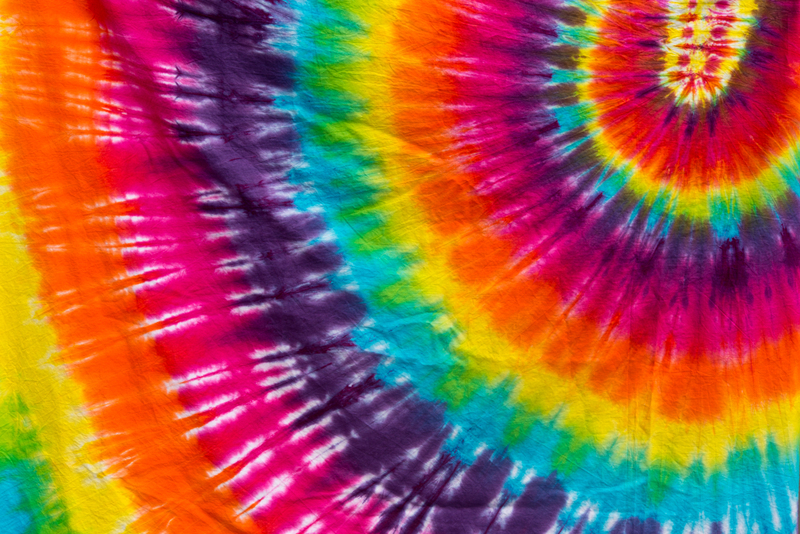Innovative Ways to Combat Microplastic Pollution: A Comprehensive Guide
Microplastic pollution has rapidly become a major global environmental issue, affecting oceans, rivers, soils, and even the air we breathe. The tiny particles, smaller than 5mm, originate from various sources - from broken-down consumer products to industrial runoffs. As research uncovers the pervasive nature and harmful impacts of these particles, finding innovative ways to combat microplastic pollution has become essential for the health of our planet and future generations.
Understanding the Urgency of Tackling Microplastic Pollution
Before exploring the latest innovative solutions for microplastic pollution, it is crucial to grasp why their presence is so problematic. Microplastics are not just environmental eyesores; they can be ingested by marine animals, accumulate toxins, threaten biodiversity, and even enter human food chains. Addressing this multifaceted problem requires a multi-pronged and creative response spanning technology, policy, and individual habits.

Technological Innovations Targeting Microplastics
Advanced Filtration Technologies
The development of cutting-edge filtration systems stands at the forefront of microplastic removal from water sources:
- Microplastic-filtering washing machine devices: Since domestic laundry is a significant contributor of microfibers, brands and startups have invented external and built-in filters to trap microplastics before they enter wastewater systems. Devices like the Guppyfriend bag and Filtrol filter are being adopted by environmentally conscious households and even regulated by local governments in places such as France.
- Wastewater treatment plant upgrades: Municipal engineers are integrating ultra-fine filters and membrane bioreactors that can capture particles as small as 0.1 microns. These advancements can prevent millions of microplastics from reaching waterways every day.
- Innovative river cleaning technologies: Projects like the Ocean Cleanup's Interceptor use autonomous, solar-powered barges to trap plastic waste, including microplastics. Other initiatives utilize bubbles barriers--rows of rising air bubbles--to corral microplastics and debris into collection zones for removal.
Biotechnological Solutions
Biology-inspired methods promise to revolutionize microplastic remediation:
- Microorganisms engineered for plastic degradation: Scientists are enhancing natural bacteria and fungi to break down microplastics more efficiently. The famous Ideonella sakaiensis bacterium produces enzymes like PETase capable of digesting PET plastics into harmless constituents. Recent research is focused on optimizing these enzymes and deploying them in contaminated environments.
- Bio-based absorbents: Innovators have developed plant-derived sponges or mats that attract and absorb microplastics from water. These products, often made from modified cellulose or chitosan, are biodegradable and present low risk to ecosystems.
Emerging Detection and Collection Tools
Rapid identification is key to eliminating microplastics:
- Portable microplastic sensors now enable water quality teams, citizen scientists, and industries to rapidly assess the concentration of microplastics in various environments--speeding up intervention and remediation efforts.
- Magnetic extraction technology: By binding microplastics to magnetic nanoparticles, researchers can separate pollutants from water with magnets. This non-intrusive method is being tested in real-world river and coastal settings.
Eco-friendly Materials and Product Redesign
Biodegradable Alternatives
Reducing microplastic generation starts with changing the materials we use. Here are some promising innovations:
- Biodegradable polymers: Companies are replacing conventional plastics with bioplastics made from cornstarch, seaweed, or cellulose. These materials break down naturally without leaving harmful residues. Popular applications include packaging, single-use items, and even textile fibers.
- Microplastic-free personal care products: The international phase-out of microbeads--tiny plastic pellets once common in exfoliants and toothpaste--has led to the rise of natural, mineral, or organic replacements that do not pollute water systems.
- Natural textile fibers: Brands are reintroducing hemp, bamboo, and organic cotton as alternatives to synthetic fabrics that shed microfibers in the wash. Technology like the viscose process can create soft, durable materials with significantly lower microplastic shed rates.
Product Lifecycle Innovations
- Closed-loop systems: More manufacturers are adopting circular economy models. For example, old carpets or clothing are taken back, processed, and re-spun into new products, minimizing waste and the risk of microplastic leakage.
- Redesigned washing cycles: Appliance makers are rethinking machine design with gentler spin cycles and water-saving features to reduce microfiber release from textiles.
Chemical Innovations in Microplastic Remediation
Recent advancements in chemistry offer new hope for effective microplastic cleanup:
- Flocculating agents: Safe chemicals that bind microplastics into larger clumps make them easier to filter out. Researchers ensure these agents are non-toxic, biodegradable, and efficient across different water bodies.
- Photocatalytic degradation: Sunlight-activated materials can break plastics into harmless substances using only solar energy. This technique is already being piloted in some wastewater treatment processes.
Policy Innovations and Community Action
Progressive Legislation and Incentives
- Microbead bans: Countries around the world are enacting laws against the manufacture, sale, and use of microbead-laden products.
- Mandatory filtration technologies: France, South Korea, and other nations now require all new washing machines to be fitted with microfiber filters, drastically reducing household microplastic outputs.
- Extended producer responsibility (EPR) laws: These innovative policies make manufacturers responsible for the entire lifecycle of their plastic products, incentivizing the design of less polluting materials and robust collection programs.
Community Engagement and Citizen Science
Individuals and organizations are playing a crucial role in controlling microplastic pollution:
- River and beach cleanups: Local communities equipped with state-of-the-art sieving nets now target not just macroplastics but microplastics too - monitoring pollution hotspots and removing micro-waste before it can reach oceans.
- Education and awareness campaigns: Innovative educational programs help people understand the environmental impact of microplastics and how their choices can make a difference.
- Testing and data contribution via smartphone apps: New apps let citizens upload water samples and microplastic sightings, creating real-time maps of pollution levels and helping direct resources to urgent areas.
The Role of the Circular Economy in Reducing Microplastic Waste
Transforming Waste into Value
The circular economy approach is being recognized as a foundational innovation in the fight against microplastics:
- Upcycling plastic waste: Plastics that would otherwise degrade into microplastics are being transformed into valuable items, from durable building materials to eco-friendly fashion accessories, reducing environmental leakage.
- Designing for disassembly: Products are now being engineered so that their components can be fully separated and recycled--minimizing fragmentation and loss of tiny plastic particles.
Innovative Ways to Prevent Microplastics at Source
Stopping microplastic generation before it starts is perhaps the most efficient solution. Here are novel preventative measures:
- Adopting natural abrasives: Industries that traditionally use abrasive microplastics (like sandblasting or cleaning) are switching to walnut shells, olive pits, or baking soda.
- Reducing tire and road wear particles: New tire formulations and road surfaces reduce microplastic creation from vehicle traffic, one of the largest sources of microplastics globally.
- Green infrastructure: Rain gardens, permeable pavements, and urban wetlands can capture microplastics in runoff before they reach waterways.

Breakthrough Research and Future Prospects
Ongoing scientific research continues to unveil innovative ways to control and ultimately reverse the impact of microplastic pollution:
- Nanotechnology for microplastic removal: Scientists are developing nanomaterials with special coatings that attract and neutralize plastic particles at unprecedented scales.
- Smart packaging: Researchers are working on edible or water-soluble packaging materials that can replace single-use plastics entirely.
- Global monitoring networks: Satellites, drones, and IoT-enabled sensors are beginning to map microplastic movement on a planetary scale, helping policymakers target interventions more effectively.
Conclusion: A Call for Urgent and Collective Action
The sheer scale and complexity of microplastic pollution require a bold, multi-layered approach. From technological breakthroughs, innovative remediation methods, and smarter materials to transformative policies and community participation, there is no singular solution--only an ongoing commitment to combat microplastic pollution with ingenuity and perseverance. Each of us can contribute by supporting smart policies, choosing sustainable products, and spreading awareness.
As governments, industries, scientists, and citizens unite around innovative actions against microplastic contamination, a cleaner, healthier planet is within reach. Let's continue to invest in science, rethink our consumption habits, and demand creative progress--because the fight against microplastics is a fight for our collective future.